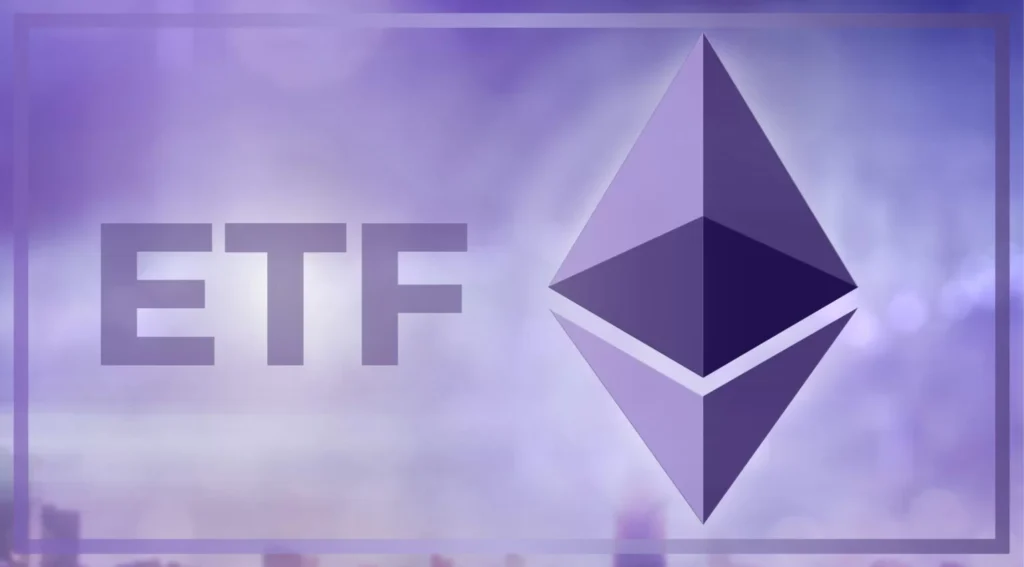How prepared are you for the July 23 launch of nine spot Ethereum ETFs? Here is the info you need to commence trading.

After years of regulatory pushback and innumerable amended registration filings, Spot Ether exchange-traded funds (ETFs) are finally entering the market.
For the first time, stock of publicly-traded Ethereum (ETH) ETFs will be listed together with the likes of Apple Inc (AAPL) and SPDR S&P 500 ETF Trust (SPY) on some of the most prominent brokerage platforms in the United States.
The anticipated listings are a pivotal moment for cryptocurrency markets and a lucrative opportunity for millions of institutional and retail investors in the United States. This is the information you require to optimize your experience.
When will spot Ether ETFs be accessible?
The five ETFs designated to trade on the Chicago Board Options Exchange (CBOE) platform—21Shares Core Ethereum ETF, Fidelity Ethereum Fund, Invesco Galaxy Ethereum ETF, VanEck Ethereum ETF, and Franklin Ethereum ETF—were confirmed by the CBOE to launch on July 23 officially.
The four additional spot ETH ETFs will be traded on the Nasdaq or the New York Stock Exchange (NYSE) Arca. Although those exchanges have not made any official announcements, they are widely anticipated to list on July 23.
Where can I acquire Ethereum ETF shares?
The brief response is that virtually any significant brokerage platform. Every spot ETH ETF that is scheduled to be listed in the final week of July has already received regulatory approval to trade on at least one major U.S. exchange, specifically the Nasdaq, the New York Stock Exchange (NYSE) Arca, or the Cboe BZX.
Every day, investors refrain from conducting direct trading on those exchanges. Instead, they depend on brokerage platforms, including well-known names like Fidelity, E*TRADE, Robinhood, Charles Schwab, and TD Ameritrade, to serve as intermediaries.
Once the ETH ETF shares are listed on public exchanges, it is anticipated that all significant brokerages and others will be able to facilitate transactions.
What are my alternatives, and how can I determine which is the best for me?
The trading of nine spot Ether ETFs is scheduled to commence. The funds are nearly identical in terms of their underlying mechanics. The creation and redemption of shares are contingent upon a core group of professional market-makers, and each ETF is endorsed by a reputable fund manager and held in spot ETH with a qualified custodian. They all receive the same standard investor protections, such as insurance against cybersecurity risks and brokerage failures.
Fees are the primary consideration for the majority of investors. Management fees for eight of the nine ETFs vary between 0.15% and 0.25%. Grayscale Ethereum Trust (ETHE) is the sole significant exception, as it began trading under a distinct fund structure in 2017 and continues to impose management fees of 2.5%.

Most Ethereum ETFs, but not all, are temporarily waiving or discounting fees to attract investors. Invesco Galaxy Ethereum ETF (QETH) and Greyscale Ethereum Trust are once again among the significant outliers in this regard.
Ironically, the Grayscale product is also the apparent frontrunner in the fee race. The Grayscale Ethereum Mini Trust (ETH) is a recently established fund designed to be listed as an ETF. Its management fees are a mere 0.15%. The fees are wholly waived for the first six months following the fund’s listing or until the fund reaches $2 billion in assets under management (AUM).
Franklin Templeton’s Franklin Ethereum ETF (EZET) is another compelling option. The fund’s management fees are the second lowest in the group, at 0.19%. They are entirely waived until January 2025 or until the fund reaches $10 billion in AUM.
Can spot Ether ETFs offer staking?
The concise response is “No.” The extended response: “Possibly, but not shortly.”
Staking deposits ETH to a validator node on the Beacon Chain of Ethereum. Staked ETH is subject to “slashing” or forfeiture of staked collateral if the validator malfunctions or misbehaves, in addition to earning a portion of network fees and other rewards.
Staking is appealing due to its substantial increase in returns. As of July 19, StakingRewards.com reports that annual rewards rates are approximately 3.7%.
Fidelity, BlackRock, and Franklin Templeton were among the issuers who sought regulatory approval to incorporate staking into their ETH ETFs earlier this year. The requests were rejected by the Securities and Exchange Commission (SEC).
According to multiple individuals who spoke with Cointelegraph anonymously, the matter is a matter of liquidity. Withdrawing stalled ETH from the Beacon chain typically necessitates several days. That poses an issue for issuers, who must promptly redeem ETF shares for underlying fund assets upon request.
The sources informed Cointelegraph that issuers are investigating methods to incorporate staking into the current crop of spot ETH ETFs. One potential approach is maintaining a “buffer” of liquid spot Ether. However, the sources indicated a feasible plan is at least several months away. At present, Ether ETFs are not eligible for pledging.
